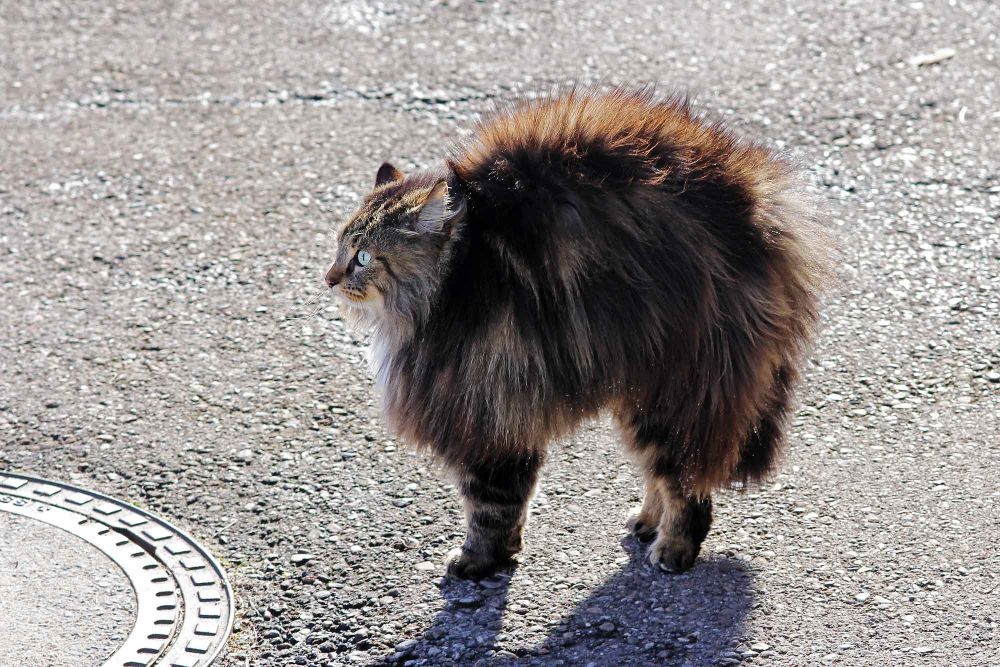Learn Feline Body Language, Understand Your Cat Better

We would get so much more done if our human communications hinged on subtle expressions, sleek movements, and specific flicks of appendages. Cats are, unlike us, very efficient in their use of the eyes, ears, fur, body positioning and of course, their tails to convey exactly what they’re thinking and feeling. From fright to pleasure, suspicion to affection, feline body language is incredibly adept at communication.
Amazingly, the more we know about the way our feline friends communicate, the deeper our human-cat connection can be!
A Lot Going On
Cats have evolved as both predator and prey. As such, they react in many different ways to various stimuli. Using all of their physical attributes – like their claws, voice, and agility – to aid in their protection and preservation, cats are precise in their actions to threaten others or defend themselves.
The Bigger Picture
To truly understand feline body language, we have to see the world through their eyes. Their moods depend on their surroundings and context. Ignoring feline body language is just one way to evoke a strong reaction from a cat. This means that people should always pay close attention to a cat’s appearance and approach cautiously, or not at all.
No Need to Look Between the Lines
Luckily, a cat’s tail communicates very clear, concise information. To understand more about what your cat feels or thinks, watch out for the following positions and appearances:
- Straight up – When a cat’s tail is pointed up toward the sky, they are feeling happy, confident and playful. When it’s also vibrating or quivering, they are near the person they like the best.
- Curved – When cats feel relaxed, their tail will be back up in the air but with a slight curve at the tip. This could be a good time to play together!
- Aligned – When a cat approaches and their tail is jutting out behind them, they are ready for anything, yet relaxed.
- Tucked – A tucked tail indicates passivity or submission. You may see this when a larger animal walks by, or a person they haven’t met yet.
- Down – If a cat’s tail is poised in a downward position, but held in a rigid fashion, they may be feeling defensive, anxious or fearful. Watch for any flicking back and forth, and other feline body language like ears pinned back, rising hair, and yowling.
Loud & Clear Feline Body Language
Take a look at the additional appearances of the tail. When cats are frightened, they want to look as small as possible. Alternatively, when they go into an attack mode, they puff themselves up and move sideways in an effort to look larger and more intimidating.
Physical Affection
A wonderful feature of feline body language is their ability to use their tail like a hand. When sitting next to or near your cat they may drape their tail over your leg, shoulder or hand. In this way, they are trying to “hold hands” with you.
Similarly, cats are prone to rubbing up on their owners legs, slowly caressing them with the tail. Isn’t feline body language amazing?
Since cats hide any symptoms of illness or injury, it’s important that cat owners have a baseline for what’s normal feline behaviors, and what’s not. If you have further questions about your cat’s health and wellness, please let us know.

